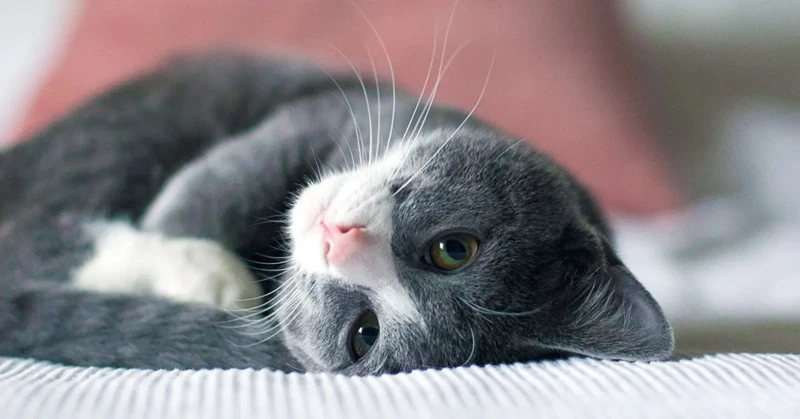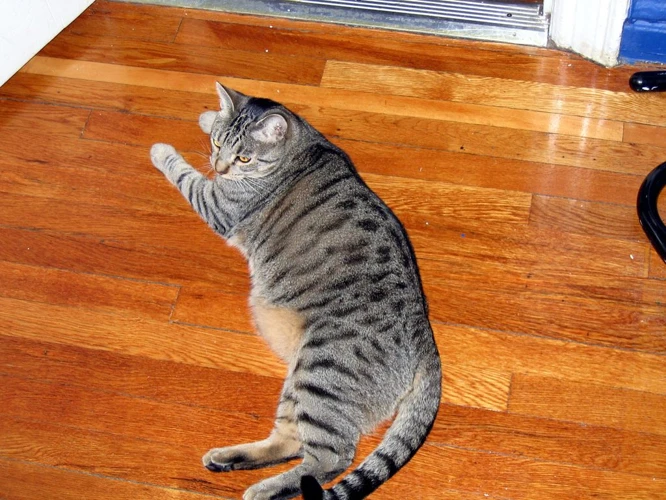As a California Spangled Cat owner, you know that house training can be a challenging task. You may have tried various methods, but none seem to work. Fortunately, clicker training a technique that uses positive reinforcement can teach your furry friend how to use the litter box effectively. But how does clicker training work, and why is it useful for house training? In this article, we’ll explore the benefits of clicker training and give you step-by-step guidance on how to train your California Spangled Cat to become a clean and tidy feline.
Why Clicker Training Works for House Training

The process of house training your California Spangled cat may seem like a daunting task, but with the right approach and approachable techniques, your furry mate will catch up in no time. One effective method is clicker training, which is an easy-to-learn method that discourages negative reinforcement and punishment. Let’s examine why clicker training is effective for house training adult cats or kittens and how this method helps create a positive environment for your Cali-spangled friend to learn the ropes of potty training. Read on to learn more!
Positive Reinforcement versus Punishment
When it comes to house training your California Spangled Cat, using positive reinforcement is much more effective than using punishment. Positive reinforcement involves rewarding your cat for good behavior, such as using the litter box, while punishment involves reprimanding or scolding your cat for bad behavior.
Here is a table outlining the differences between the two:
| Positive Reinforcement | Punishment |
|---|---|
| Fosters a positive relationship between you and your cat | Can damage the trust between you and your cat |
| Encourages your cat to repeat good behavior | Can lead to fear and anxiety in your cat |
| Allows your cat to learn at their own pace | Can be confusing and aversive for your cat |
| Can strengthen the bond between you and your cat | May cause aggression or avoidance in your cat |
By using positive reinforcement, you can create a safe and nurturing environment for your California Spangled Cat to learn and grow. This kind of training will help your cat associate good behavior with rewards and will encourage them to continue doing the right thing. For specific tips on how to start house training your California Spangled Cat with clicker training, check out our house training guide.
Association with the Click Sound
When it comes to clicker training, the sound of the click plays a crucial role in the training process. Clicker training works by associating the sound of the click with a reward for good behavior. This way, the cat learns to associate the click with positive reinforcement, making it easier for them to understand what you want them to do.
To establish this association, you need to choose a clicker that makes a distinct, audible sound. Clickers designed for training usually have a metal strip inside that produces a sharp, consistent sound. When introducing the clicker to your cat, start by clicking it a few times in front of them without asking for any specific behavior. This will help them get used to the sound of the click.
Once your cat starts to associate the click with something positive, you can start using it during training. Whenever your cat performs a desired behavior, such as using the litter box, click the clicker and reward them with a treat or verbal praise. Over time, your cat will understand that the click means they did something right, and will be more likely to repeat the behavior in the future.
It’s important to note that clicker training should always be positive and never involve punishment. Using punishment can create fear and stress in your cat, which can interfere with their ability to learn and bond with you. Stick to positive reinforcement and give your cat time to learn at their own pace.
For more information on house training your California Spangled cat with clicker training, check out our article on Cali Spangled Cat House Training. If you encounter any problems during the training process, our article on Troubleshooting House Training Issues in Adult California Spangled Cats might be useful. And if you’re dealing with litter box problems specifically, be sure to read our article on Cali Litter Box Problems.
Getting Started with Clicker Training

Starting clicker training with your California Spangled Cat can be a fun and effective way to get them to learn new behaviors. Before you begin, it is important to understand the basics of clicker training and how to set up a reward system. In this section, we will explore the steps necessary to start training your cat using a clicker. Once you have successfully implemented these strategies, you can move on to house training your California Spangled Cat. If you haven’t read about it yet, you can read more about house training your California Spangled Cat here: cali-spangled-cat-house-training.
Choosing and Introducing the Clicker
Choosing and Introducing the Clicker to your California Spangled Cat is a crucial step in using clicker training for house training. Clicker training relies heavily on positive reinforcement, and the clicker is an important tool for facilitating this. Here are some tips for choosing and introducing the clicker to your feline friend.
| Tip | Description |
|---|---|
| Choose a Clicker with a Comfortable Grip | When selecting a clicker, make sure that it has a comfortable grip that fits well in your hand. This will ensure that you can easily use the clicker during training sessions. |
| Use a Clicker with a Consistent Sound | Choose a clicker that produces a consistent and distinct sound. This will help your cat to associate the sound with positive reinforcement. |
| Introduce the Clicker to Your Cat Slowly | Initially, your cat may be startled by the sound of the clicker. To avoid frightening your cat, start by using the clicker without training, and gradually introduce it by clicking it from a distance. Once your cat becomes comfortable with the sound, you can use it during training sessions. |
| Pair the Clicker with Treats | Pairing the clicker with food treats is a great way to encourage your cat to associate the sound with positive reinforcement. Start by clicking the clicker and immediately giving your cat a treat. Repeat this process multiple times to reinforce the association between the click and the treat. |
By following these tips, you can choose the right clicker for your California Spangled Cat and ensure that they associate the clicker with positive reinforcement. This will make it easier to use clicker training when house training your cat.
Establishing a Reward System
Before starting clicker training with your California Spangled Cat, it’s crucial to establish a reward system that motivates them to learn and repeat the desired behavior. This will make the training process more effective and enjoyable for both you and your cat. In this section, we’ll discuss how to set up a reward system for clicker training.
Step 1: Choose the Right Rewards
The first step in establishing a reward system is to choose the right rewards for your cat. Rewards can be food, toys, or praise, depending on what motivates your cat. It’s important to find out what your cat likes and dislikes, so you can tailor your rewards accordingly.
Step 2: Set the Criteria for Rewards
Once you’ve chosen the rewards, you need to set the criteria for when your cat will receive them. For example, if you’re teaching your cat to use the litter box, you can reward them each time they use it appropriately. This will reinforce good behavior and encourage your cat to continue using the litter box.
Step 3: Determine the Timing of Rewards
Timing is key in clicker training, and rewards should be given immediately after your cat performs the desired behavior. This will help your cat make the connection between the behavior and the reward. If you wait too long to give a reward, your cat may not understand what they did right.
Step 4: Use a Clicker and Verbal Cue
To establish a reward system, you need to use a clicker and a verbal cue. The clicker is used to mark the desired behavior, and the verbal cue is used to let your cat know that they will receive a reward. For example, if you’re teaching your cat to sit, you would click the clicker when they sit and say “good job” or “yes” to let them know they did well.
Step 5: Gradually Reduce Treats
As your cat becomes more accustomed to clicker training and the reward system, you can gradually reduce the number of treats you give them. Eventually, your cat will learn to associate the clicker and verbal cue with good behavior, and rewards will no longer be necessary.
Establishing a reward system is a crucial step in clicker training your California Spangled Cat. By choosing the right rewards, setting the criteria and timing, and gradually reducing treats, you can effectively train your cat and reinforce good behavior. With patience and consistency, you and your cat can enjoy a happy and well-trained relationship.
| Steps for Establishing a Reward System: |
|---|
| Step 1: Choose the Right Rewards |
| Step 2: Set the Criteria for Rewards |
| Step 3: Determine the Timing of Rewards |
| Step 4: Use a Clicker and Verbal Cue |
| Step 5: Gradually Reduce Treats |
House Training Your California Spangled Cat

Ensuring that your California Spangled cat is fully house trained is an essential part of having a happy and healthy pet. However, house training a cat can be a daunting task, especially if you’re a first-time cat owner. But don’t worry, with the right tools and training techniques, your cat can quickly and easily learn to use the litter box every time. In this section, we’ll discuss the necessary steps you need to take to train your pet to use the litter box regularly using clicker training. So, grab your clicker and let’s get started!
Setting Up a Litter Box Station
When setting up a litter box station for your California Spangled Cat, there are few things to consider to ensure success with clicker training. It’s important to choose the right spot for the litter box and make it an appealing place for your cat to use.
Location:
Choose a quiet and easily accessible area for the litter box. Cats are naturally clean animals and they prefer their litter box to be in a private location where they can do their business without interruption. It’s also important to keep the litter box away from areas where your cat eats and drinks.
Type of litter box:
There are several types of litter boxes to choose from, including covered and uncovered options. It’s important to choose a box that is easily accessible for your cat. If your cat is a kitten, a smaller litter box could be more appropriate until they grow in size.
Type of litter:
There are also different types of litter to choose from, including clay, clumping, and natural options. It’s important to choose a litter that your cat prefers and is comfortable using. Some cats prefer unscented litter, while others prefer a more aromatic option.
Cleaning:
It’s important to keep the litter box clean. Scoop the litter daily, and completely replace the litter and clean the box every two to four weeks. This will help keep your cat comfortable using the litter box and prevent any unwanted accidents.
By setting up a litter box station that is appealing and comfortable for your cat, you’ll be setting the foundation for successful clicker training for house training your California Spangled Cat.
Teaching Your Cat to Use the Litter Box
One of the most important steps in house training your California Spangled Cat using clicker training is teaching them to use the litter box. Here is a step-by-step guide that can help you achieve this:
Step 1: Place the Litter Box in a Convenient Location
Your cat needs to feel comfortable with the litter box in order to use it correctly. It is recommended to place the litter box in a quiet and accessible location. This way, your cat can easily find it and use it whenever necessary.
Step 2: Guide Your Cat to the Litter Box
When you first introduce your cat to the litter box, you should guide them towards it and show them what it is used for. Place your cat in the litter box and touch their paws to the litter. This will help familiarize them with the texture and feeling of using the litter box.
Step 3: Use Clicker Training to Reinforce Positive Behavior
Clicker training works by helping your cat associate positive behavior with a reward. Whenever you notice your cat using the litter box correctly, use the clicker to signal it as a positive behavior, and offer a treat or other reward to reinforce this behavior. This way, your cat will learn to use the litter box consistently.
Step 4: Clean the Litter Box Regularly
Cats are naturally clean creatures, and they prefer a clean litter box. It is important to clean the litter box regularly. Experts recommend scooping out any waste at least once per day and replacing the litter about once per week. This way, your cat will feel more comfortable and be more likely to use it correctly.
Step 5: Be Patient and Consistent
Learning a new habit like using the litter box can take time, so be patient and consistent with your cat. Do not punish them for accidents or mistakes, because this will only make them more anxious and less likely to use the litter box in the future. Instead, use positive reinforcement and consistent training to help them learn and become comfortable with using the litter box.
By following these steps consistently, you can effectively train your California Spangled Cat to use the litter box with the help of clicker training.
Dealing with Accidents
Accidents will happen during the house training process, but it is important to remain patient and use positive reinforcement to encourage your California Spangled Cat to use the litter box. Here are some steps you can take when accidents do occur:
- Clean up the mess promptly: Remove any solid waste and blot up any urine immediately with paper towels. Avoid using any strong-smelling cleaners, as the smell may encourage your cat to continue using that spot as a toilet.
- Identify the reason for the accident: Was the litter box not easily accessible? Was it too dirty? Was your cat frightened or stressed? Make note of any potential reasons for the accident to prevent it from happening again in the future.
- Reinforce positive behavior: When your cat does use the litter box, be sure to offer plenty of praise and treats. This will help your cat associate using the litter box with positive experiences.
- Consider the litter box location: If your California Spangled Cat continues to have accidents, consider moving the litter box to a different location. Make sure it is in a quiet, low-traffic area and easily accessible for your cat.
- Consult with a veterinarian: If your cat is still having frequent accidents despite proper training, there may be a medical issue that needs to be addressed. Schedule an appointment with your veterinarian to rule out any underlying health problems.
Remember, house training takes time and patience. Using clicker training and positive reinforcement will help your California Spangled Cat learn to use the litter box consistently. With consistent training and reinforcement, accidents will become less frequent over time.
Troubleshooting House Training with Clicker Training
As much as we wish for everything to go smoothly, house training your California Spangled cat with clicker training may not always be a seamless process. You may encounter hiccups along the way that can impede your cat’s progress in learning. But don’t worry, we’ve got you covered. In this section, we will discuss common issues you may face while house training your cat and provide solutions to help you troubleshoot these problems with clicker training. So, let’s dive in!
Difficulty with Training
Training your California Spangled Cat using clicker training can sometimes come with its own set of challenges. One of the most common difficulties is when your cat is not responding to your training efforts as expected. Here are some possible reasons and solutions to help overcome difficulty with training.
| Possible Reason | Solution |
|---|---|
| Your cat is not motivated by the treats | Try different types of treats. Some cats prefer wet food, while others may prefer dry kibble or even small pieces of meat. What matters most is that your cat is interested in the treats and feels rewarded. |
| Your cat is distracted or uninterested | Make sure your training sessions are held in a quiet and distraction-free environment. Also, try to keep your training sessions short and engaging. Use treats that your cat really loves and try to keep the training fun and exciting for your cat. |
| Your cat is not responding as expected | Make sure you are following the correct clicker training protocol. Check your timing and consistency, and make sure that you are not confusing or overwhelming your cat. If necessary, take a break and come back to training later with a fresh approach. |
It is also important to remember that all cats learn at their own pace, so do not get discouraged if your cat is taking longer to learn than expected. With patience and persistence, your cat will eventually learn to use the litter box consistently. Remember to always keep training sessions positive and rewarding, and to celebrate every small success along the way.
Medical Issues
As a pet owner, it’s important to be aware of potential medical issues that could affect your California Spangled cat’s ability to successfully be house trained using clicker training. While clicker training is a positive reinforcement tool that can be effective for most cats, sometimes medical issues can arise that can impact your cat’s ability to learn and follow commands.
One of the most common medical issues that can affect house training is a urinary tract infection. This can cause your cat to urinate outside of the litter box and can sometimes be mistaken for a training issue. If you notice your cat having accidents and acting lethargic or in pain, it’s important to take them to the vet for a check-up.
Another issue that can arise is a gastrointestinal problem that can cause your cat to have diarrhea or constipation. This can also impact their ability to use the litter box properly. If you notice your cat having issues with bowel movements, it’s important to take them to the vet to get a diagnosis and treatment.
It’s also important to note that some medications and medical treatments can impact your cat’s behavior and ability to learn. If your cat is on medication or receiving treatment for a medical condition, consult with your vet to see if it could be impacting their training progress.
It’s important to keep an eye on your California Spangled cat’s health and wellbeing during the house training process. A healthy cat will be more receptive to clicker training and will have an easier time learning and following commands. If you suspect your cat may be experiencing a medical issue, seek veterinary care and adjust your training methods accordingly.
| Medical Issue | Symptoms |
| — | — |
| Urinary Tract Infection | Urinating outside the litter box, acting lethargic or in pain |
| Gastrointestinal Problems | Diarrhea or constipation, difficulty using the litter box |
| Medication Side Effects | Changes in behavior and ability to learn |
Conclusion
After implementing clicker training to house train your California Spangled Cat, you should feel confident in your ability to teach your feline friend new behaviors using positive reinforcement. Remember that training takes time and patience, but it is a rewarding and worthwhile investment in your cat’s well-being.
Throughout the training process, keep in mind the importance of positive reinforcement versus punishment. Positive reinforcement, such as treats and praise, encourages desired behaviors and strengthens the bond between you and your cat. Punishment, on the other hand, can cause fear and anxiety in your cat and harm your relationship.
By associating the click sound with rewards, you can create a powerful tool for communicating with your cat. The clicker becomes a signal that instantly tells your cat, “Yes! That is what I want!” and reinforces good behavior.
In addition to learning how to use the clicker, setting up a litter box station and teaching your cat to use the litter box are crucial steps in house training. Be patient and consistent, and make sure your cat has plenty of opportunities to use the litter box.
If you encounter any difficulties during training, remember to troubleshoot and modify your techniques if necessary. And if you suspect a medical issue may be causing accidents, consult with your veterinarian for guidance.
Overall, clicker training can be a fun and effective way to teach your California Spangled Cat new behaviors. With patience, consistency, and positive reinforcement, you can create a strong bond with your feline friend and enjoy a happy, healthy relationship for years to come.
Frequently Asked Questions
1. Can I use clicker training to house train my adult California Spangled Cat?
Yes, clicker training can be used for cats of all ages.
2. How long does it typically take to house train a California Spangled Cat using clicker training?
Every cat is different, but with consistent training, it is possible to see progress in as little as a few days.
3. Can I use treats other than cat food as a reward during clicker training?
Yes, as long as the treats are safe for cats and something that your cat enjoys eating.
4. What should I do if my cat seems afraid of the clicker sound?
Gradually introduce the clicker sound in a positive way by clicking and immediately giving a treat. Slowly increase the volume over time to desensitize your cat to the noise.
5. Can I use clicker training to teach my cat other behaviors besides using the litter box?
Yes, clicker training can be used to teach a variety of behaviors such as sitting, coming when called, and playing with specific toys.
6. Is it necessary to use a specific type of litter for the litter box when house training my cat?
No, there are many different types of litter available. You should choose one that your cat seems comfortable using.
7. Can I use clicker training for multiple cats in the same household?
Yes, it is possible to clicker train multiple cats at once as long as each cat has their own litter box and training session.
8. What should I do if my cat is consistently having accidents outside of the litter box?
Consult with your veterinarian to rule out any underlying medical conditions. It may also be helpful to consult with a professional cat trainer to help identify and correct any issues with the training process.
9. Is it possible to house train a California Spangled Cat that has been previously living outside or in an unsanitary environment?
Yes, it may take a bit more time and effort, but with patience and consistent training, it is possible to house train a cat that is not used to using a litter box.
10. Can I use clicker training to stop my cat from scratching furniture?
Yes, clicker training can be used to teach your cat appropriate scratching behavior such as using a scratching post instead of furniture.







